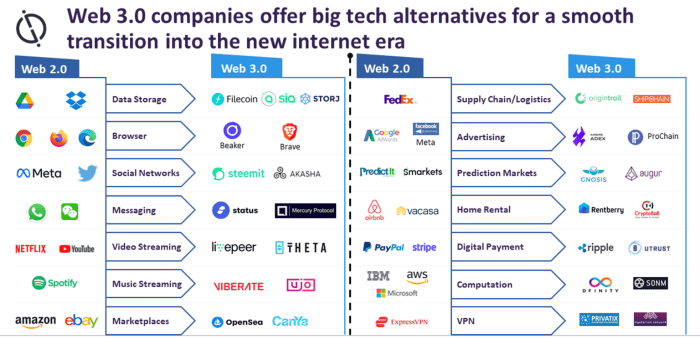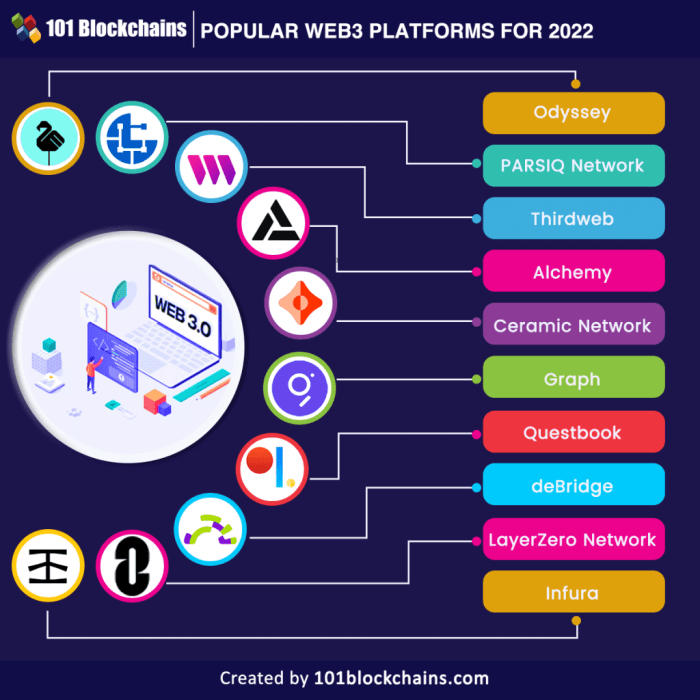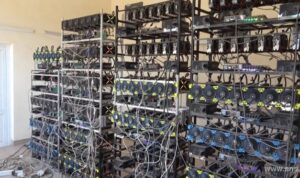Web3 applications are shaking up the online world with a fresh take on decentralization and innovation, paving the way for a new era of digital experiences that are bound to blow your mind. Get ready to dive into a world where blockchain, decentralized storage, and smart contracts collide to create something extraordinary.
Overview of Web3 Applications
Web3 applications are the next generation of internet applications that leverage decentralized technologies like blockchain, decentralized storage, and smart contracts to provide a more secure, transparent, and user-centric digital experience. These applications aim to decentralize control, eliminate intermediaries, and empower users to have more ownership and control over their data and digital interactions.
Key Features of Web3 Applications
- Blockchain Technology: Web3 applications utilize blockchain technology to create a tamper-proof and transparent ledger that records transactions and data in a secure and immutable manner.
- Decentralized Storage: Unlike traditional web applications that rely on centralized servers, Web3 applications store data across a network of nodes, ensuring data integrity and availability.
- Smart Contracts: Smart contracts are self-executing contracts with the terms of the agreement directly written into code. These contracts automate and enforce agreements without the need for intermediaries.
Benefits of Web3 Applications
Web3 applications offer numerous advantages over traditional centralized applications. These benefits include enhanced security and data privacy for users, as well as the potential to disrupt various industries and create new opportunities for innovation.
Enhanced Security and Data Privacy
Web3 applications utilize blockchain technology, which provides a decentralized and secure way to store and manage data. By eliminating the need for a central authority to control and validate transactions, Web3 applications reduce the risk of data breaches and unauthorized access. Users have greater control over their personal information and can be assured of enhanced privacy protections.
Disruption of Industries and Innovation
The decentralized nature of Web3 applications has the potential to disrupt traditional industries such as finance, healthcare, and supply chain management. By removing intermediaries and enabling peer-to-peer transactions, Web3 applications can streamline processes, reduce costs, and increase efficiency. This disruption opens up new opportunities for innovation and collaboration, leading to the development of novel solutions and business models.
Examples of Web3 Applications

Web3 applications have revolutionized various industries by leveraging blockchain technology to create decentralized platforms. Let’s explore some popular examples of Web3 applications below:
Decentralized Finance (DeFi) Platforms
Decentralized finance platforms, also known as DeFi, enable users to access financial services without the need for traditional intermediaries like banks. Examples include Uniswap, Compound, and MakerDAO. These platforms allow users to lend, borrow, trade, and earn interest on cryptocurrencies in a permissionless and secure manner.
NFT Marketplaces
NFT marketplaces operate as Web3 applications by facilitating the buying, selling, and trading of non-fungible tokens (NFTs) representing digital art, collectibles, and other unique assets. Platforms like OpenSea, Rarible, and Foundation have transformed the art and collectibles industry by providing artists and creators with a new way to monetize their work and engage with a global audience.
Decentralized Autonomous Organizations (DAOs), Web3 applications
Decentralized autonomous organizations, or DAOs, function as Web3 applications for governance and decision-making by allowing members to vote on proposals and manage the organization’s funds through smart contracts. Examples like DAOstack and Aragon empower communities to govern themselves in a transparent and decentralized manner, eliminating the need for centralized authorities.
Challenges and Limitations of Web3 Applications

Web3 applications face several challenges and limitations that can impact their scalability, user adoption, and regulatory compliance. Additionally, the environmental impact of blockchain technology used in Web3 applications is a growing concern. Exploring potential solutions to address these limitations is crucial to promoting the mainstream adoption of Web3 applications.
Scalability
Scalability remains a major challenge for Web3 applications due to the limitations of blockchain technology. The decentralized nature of blockchain makes it difficult to process a large number of transactions quickly, leading to network congestion and higher fees. This can hinder the overall user experience and prevent widespread adoption of Web3 applications.
User Adoption
User adoption is another challenge faced by Web3 applications, as many users are unfamiliar with blockchain technology and decentralized platforms. The complex user interfaces and technical requirements of Web3 applications can be overwhelming for the average user, leading to a lack of mainstream adoption. Educating users and improving the user experience are essential to increasing adoption rates.
Regulatory Compliance
Regulatory compliance poses a significant challenge for Web3 applications, as the legal landscape surrounding blockchain technology is constantly evolving. Compliance with existing regulations and navigating new regulatory frameworks can be complex and time-consuming for developers and users alike. Ensuring compliance while maintaining the decentralized nature of Web3 applications is a delicate balance that must be carefully managed.
Environmental Impact
The environmental impact of blockchain technology used in Web3 applications is a growing concern, particularly due to the energy-intensive process of mining cryptocurrencies. The high energy consumption of blockchain networks can contribute to carbon emissions and environmental degradation. Finding sustainable solutions for blockchain technology is essential to minimize its environmental footprint.
Potential Solutions
To address the limitations of Web3 applications and promote their mainstream adoption, several potential solutions can be explored. Implementing scalability solutions such as layer 2 scaling solutions and sharding can improve transaction speeds and reduce fees. Enhancing user education and simplifying user interfaces can make Web3 applications more accessible to a wider audience. Collaborating with regulators to develop clear guidelines and compliance frameworks can help ensure the long-term viability of Web3 applications in a regulated environment.
